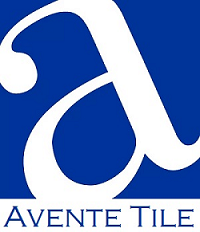How to Lay Out a Cement Tile Floor
Posted by William Buyok on
Learn how to lay out a cement tile floor like a pro. When laying cement floor tile - or any floor tile - some basic rules apply and it all starts with a floor plan layout. These rules apply to plain tile, a pattern that covers the entire space or a traditional rug design. The floor plan layout communicates exactly where each tile should be laid, ensures the correct quantity of tiles are purchased, and most importantly, is the first step to a successful installation.
Before ordering tiles, decide how the tile will be installed. There are two basic layouts to consider when you install patterned cement tile or concrete tile. You can create a traditional rug layout or cover the entire floor with the same patterned or plain tile.

A cement tile floor layout with a traditional rug design
The layout uses patterned cement tile for the rug and border.
1. Framed or Rug Layout typically uses a patterned tile in the main field or rug; however, plain tile can also be used. The rug is framed with a patterned border tile or plain tile in a different color. The area outside of the border uses plain or solid color tiles that run to the edge of the room. Achieve the classic look of a tile rug on your floor with a patterned tile and border.

Rug layouts using only patterned tile for the border.
Plain tile are in the field and outside the border.

Rendering of a cement tile rug framed with plain border tiles.

Rendering of a Cement Tile Rug with Border and Plain Tile.
2. Full pattern repeat is where the pattern runs to the edge of the room or space. This works great for irregular-shaped or smaller rooms, and provides a slightly more contemporary look.

Example of patterned tiles covering the entire floor or full pattern repeat.
Success Starts with a Scaled Drawing
The first and most important step is to have an accurate, clear plan of the layout. This can only be achieved with a scaled drawing. Make sure to measure twice or even thrice! A floor plan layout is a scaled drawing of the room. Often called a plan view, it shows the plan or layout from above the room looking straight down. The layout or plan drawing must include the details of the room such as cabinets and doorways, the tile's details (pattern and border placement), and can even account for grout lines. The better the drawing, the more accurate the plan. An accurate plan will illustrate exactly how to layout a cement tile floor.
When laying patterned or plain tile for a floor, you want to minimize cuts in the main field. This means cuts to the tile should be placed only around the edges, while the pattern should be centered in the space. For floors, you'll start in the center of the room and work your way out to the walls; making cuts only to those tiles near the edge of the room.
Rug layouts are the most difficult, so start with a scale drawing of the area to be tiled. Find the center of the room and start your pattern for the main field in the center, too. Working out to include the border at least one tile width away from any irregular shapes or walls. Avoid cutting tiles for any reason that are inside the rug.
Remember, DO NOT run the border right to the edge of the room. Leave at least 3- to 4-inches between the outside border and edge of the room for a plain, solid color "fill tile." Room edges are never square and cuts to the border will emphasize this, thereby guaranteeing an unprofessional or undesirable result. Cuts that are not true or square won't show on a plain tile because there is no pattern.
How to Layout a Cement Tile Floor in 5 Easy Steps
Here are the steps you need to follow to install a cement tile floor or create a cement tile layout for any floor. To simplify the explanation, this example doesn't include a border. Rather, it uses an alternating quarter design tiles. Four tiles make the medallion pattern and four different tiles make the cross pattern. We alternate the cross and medallion like a checkerboard.
-
Find the center of the room. Do this either with a chalk line for smaller rooms or more precisely by measuring each side of a rectangular room. When finding the center or a room, ignore closets, niches or alcoves connected to the main part of the room.

Step 1. Find the center of the room. -
Place the center of the pattern in the center of the room. Notice the cement tile we chose requires eight (8) tiles to complete the pattern (four cross and four medallion); as such, 16 tiles are placed in the room's center.

Step 2. Start laying the tile from the center of the room. -
Continue the pattern in all directions until there isn't enough room to complete the pattern. All this should be done without cutting any tile. If running the pattern to the edge, then start your cuts here and maintain the pattern. If using a border, the border will be installed.

Step 3. Continue the pattern until the pattern tiles need to be cut. -
Fill the remaining irregular space around the edge of the patterned field tile with a complementary solid color cement tile or stone. Connecting closets or small rooms should use the same flooring material as the edges.

Step 4. Fill the remaining irregular space around the edge of the patterned field tile with plain tile. -
Voilà! The cement tile layout or plan is complete.

Step 5. The Tile Layout is Complete!
Avente Tile Provides Design Layout Services
A detailed floor layout plan or drawing will provide you with the best visual, point out any flaws, and clearly communicate your desires to the installer. With a detailed drawing, you can better visualize the space, you may be surprised what will work. If you need assistance with a cement tile floor layout, let us know. We offer design services that will ensure your project plan is complete and have ordered and specified the correct quantity of tile, taking into account waste and installation. If you have a complicated or irregular shape or want to see alternate layouts, let us know. For instance, Avente Tile provided design services to help a customer decide that a full pattern repeat wasn't required for the short part of the L-shaped room below. The detailed drawing guided the customer to find the right tile between border, pattern and background in a tight and somewhat awkward space. We also can provide three-dimensional renderings or layouts for contractors, such as the kitchen layout below.

Avente Tile's design services created this layout plan.

A detailed layout for complex kitchen floor plan developed by Avente Tile for an installer.
Let our passion for cement tile help you!
Our passion for cement tile has led us to create one of the broadest collections of cement tile anywhere. Our experience and knowledge of this hand-crafted product will guide you in making the right decisions. With over a decade of experience selling cement tile, we care intensely about finding the right cement tile for you! Visit our handmade cement tile information center, you 'll find links to resources that will answer your questions about cement tiles. If you don't find answers, let us know by completing our Request Information form, or by calling us during business hours at 888.739.4972 9-5 PST M-F. We look forward to talking cement tile with you.
